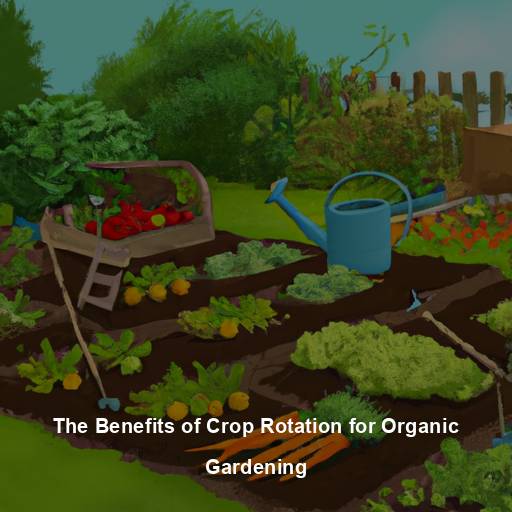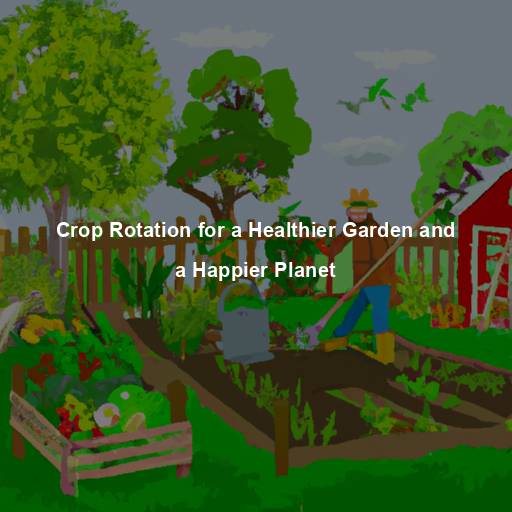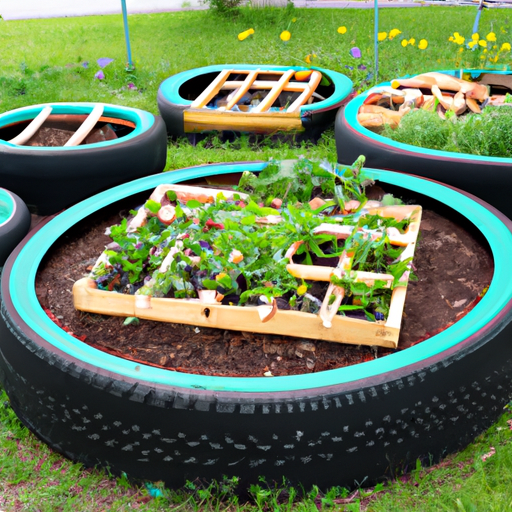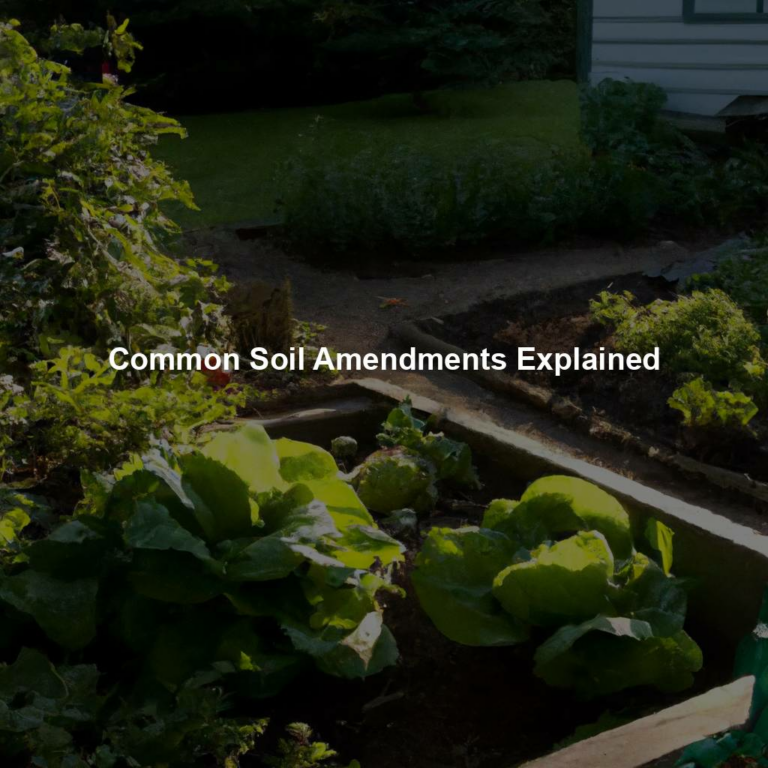If you’re a gardening enthusiast looking to take your hobby to the next level, building a raised garden bed is an excellent place to start.
Not only can it help extend your growing season and improve soil quality, but it also allows for easier maintenance and accessibility.
However, with so many options available on the market today, choosing the right design and materials for your new garden bed can be overwhelming.
Fortunately, we’ve compiled some expert tips to help guide you through the process of building the perfect raised garden bed.
From selecting the ideal location and size to considering drainage and irrigation needs, our advice will ensure that your plants thrive in their new home.
So grab your gloves and shovel, because with these helpful hints in hand, you’ll have a beautiful and bountiful garden in no time!
Choosing The Right Location
Have you ever heard the old adage ‘location, location, location’? It’s just as relevant when it comes to building a raised garden bed.
First and foremost, consider the sunlight requirements of your plants. Most vegetables need at least six hours of direct sunlight per day, so choose a spot that gets plenty of sun throughout the day.
Next, soil preparation is key – make sure your chosen location has good drainage and access to healthy soil. Avoid areas where water tends to pool or where there are tree roots competing for nutrients.
With these factors in mind, you’ll be on your way to creating the perfect environment for your raised garden bed without any worry about poor lighting conditions or unhealthy soil composition.
Selecting The Best Materials
When it comes to selecting materials for your raised garden bed, there are a variety of cost-effective options available.
Consider using untreated lumber or reclaimed wood for the frame, as these can be found at affordable prices and repurposing old wood is an eco-friendly choice.
Additionally, you may want to consider using composite decking boards made from recycled plastic and wood fibers, which offer durability and low-maintenance upkeep.
For the soil mix within your raised garden bed, opt for organic compost and avoid chemical fertilizers that can harm beneficial insects in your garden.
By choosing environmentally friendly materials like these, not only will you get a beautiful raised garden bed but also do your part in preserving the planet’s natural resources.
Determining The Appropriate Size
Now that you have the basic knowledge of building a raised garden bed, it’s time to determine the appropriate size for your gardening needs.
Think of this step as laying the foundation for a sturdy structure. It’s essential to consider how much space you have available and what plants you want to grow before deciding on the size.
A good metaphor would be that just like Goldilocks found her perfect bowl of porridge, you must find the right size for your garden bed – not too small, not too big, but just right.
Soil preparation is crucial when creating any type of garden bed, and a raised one is no exception. You’ll need enough soil depth to accommodate root growth while providing adequate drainage. The ideal depth ranges from 12-18 inches depending on what plants you’re growing.
Additionally, companion planting can help make efficient use of limited space by placing complimentary plants together in close proximity.
With all these factors taken into consideration, it’s important not to rush through determining the appropriate size for your raised garden bed. Take some time to think about what will work best for your specific needs and goals.
Remember that once established, your garden bed can provide abundant harvests with proper care and attention.
Ensuring Proper Drainage And Irrigation
To ensure proper drainage and irrigation in your raised garden bed, it is important to pay attention to water retention and soil preparation.
Start by selecting a well-draining location for your bed, such as an area with slightly sloping ground. This will help prevent water from pooling at the bottom of your bed and promote healthy root growth.
Next, add a layer of rocks or gravel at the bottom of your bed to further improve drainage. When preparing your soil, consider adding organic matter like compost or aged manure to increase its ability to hold moisture without becoming waterlogged.
Additionally, be sure to provide adequate irrigation through regular watering or installing a drip system that delivers water directly to plant roots.
With these steps in place, you can enjoy a thriving garden while avoiding issues caused by excess moisture or poor drainage.
Planting And Maintenance Tips
Imagine walking out to your raised garden bed and seeing a lush, vibrant array of plants thriving in perfect harmony.
This is the beauty of companion planting – strategically grouping crops together that benefit each other’s growth and health. Consider pairing tomatoes with basil or marigolds, which can repel pests like aphids and whiteflies. Similarly, planting onions near lettuce can ward off slugs and snails while also improving the flavor of both crops.
But even with careful planning, pest control is still a crucial aspect of maintaining your raised garden bed. One effective method is using natural remedies such as neem oil or garlic spray, which can deter unwanted insects without harming beneficial ones. Another approach is creating physical barriers like netting or row covers to keep pests at bay.
Remember, successful gardening requires patience and attention to detail. Regularly checking for signs of disease or infestation, keeping soil well-nourished through composting or fertilizing, and providing adequate water and sunlight are all essential steps towards achieving a flourishing garden.
By implementing these tips for planting and maintenance in your raised garden bed, you’ll be one step closer to growing an abundant harvest of fresh produce straight from your own backyard oasis.
Frequently Asked Questions
How Deep Should The Soil Be In A Raised Garden Bed?
When it comes to soil depth in a raised garden bed, there are a few factors to consider.
First and foremost is your plant selection – different crops have different root depths and will require varying amounts of space for optimal growth.
As a general rule of thumb, aim for at least 12 inches of soil depth to give roots enough room to spread out and access nutrients. Of course, this can vary depending on the size of your plants and how much they’ll be growing underground versus above ground.
Additionally, you may want to layer your soil with compost or other organic matter to enrich it further and promote healthy plant growth.
Ultimately, finding the perfect balance between soil depth and quality will depend on your individual needs as a gardener – but by taking these factors into account, you can create an ideal environment for all sorts of fruits, vegetables, herbs, and flowers to thrive!
Can I Use Treated Lumber For My Raised Garden Bed?
Using treated lumber for your raised garden bed may seem like a convenient and affordable option, but did you know that it can pose potential health risks? According to studies, the chemicals used in treating lumber have been linked to skin irritation, respiratory problems, and even cancer.
As Master Gardeners, we always prioritize safety and sustainability when it comes to our gardening practices. That’s why we recommend exploring alternative materials such as cedar or redwood which are naturally resistant to rot and insects.
So before you start building your dream garden bed, think twice about the potential long-term effects on yourself and the environment.
How Often Should I Water My Plants In A Raised Garden Bed?
When it comes to watering frequency for plants in a raised garden bed, there are a few factors that come into play.
First and foremost is the soil moisture retention. Depending on the type of soil used, some beds may retain water better than others. It’s important to keep an eye on the soil moisture levels regularly and adjust your watering schedule accordingly.
As a general rule of thumb, most plants require about 1-2 inches of water per week, but this can vary based on factors such as temperature and sunlight exposure.
Be sure not to overwater your plants, as this can lead to root rot or other issues. Instead, aim for consistent and even watering throughout the growing season to ensure healthy plant growth.
Do I Need To Add Fertilizer To My Raised Garden Bed Soil?
Organic alternatives are the way to go when it comes to fertilizing your raised garden bed soil. Adding too much fertilizer can have detrimental effects on your plants, such as overgrowth and weak root systems.
As a Master Gardener, I recommend using natural solutions like compost or worm castings that not only nourish your plants but also improve soil structure. It’s important to remember that less is sometimes more in gardening.
Overfertilization can lead to imbalanced nutrient levels and harm both the environment and your crops.’
How Long Will My Raised Garden Bed Last Before Needing To Be Replaced?
Raised garden bed maintenance is essential to ensure the longevity of your materials. The lifespan of a raised garden bed can vary depending on factors such as material quality and weather conditions.
However, with proper care and maintenance, you can expect your raised garden bed to last for several years before needing replacement.
Regularly inspecting for any signs of wear or damage, replacing rotted wood boards or rusted metal sheets, and ensuring good drainage are some key steps to take in extending the life of your raised garden bed.
Additionally, using high-quality materials from the start will also help increase its longevity.
Conclusion
As a Master Gardener, I can tell you that building the perfect raised garden bed is like baking a delicious cake. Just as you need to measure out your ingredients carefully and follow the recipe step by step, creating a successful raised garden bed requires attention to detail.
Remember to make sure your soil depth is at least 6 inches deep for optimal root growth. Don’t cut corners with treated lumber – opt for natural options instead.
Watering frequency will depend on weather conditions and plant types, but be sure not to overwater or underwater. And finally, adding fertilizer to your soil will help ensure healthy growth throughout the growing season.
With these tips in mind, you’ll have a thriving garden bed that lasts for years to come. So get ready to roll up your sleeves and put those green thumbs to work!






